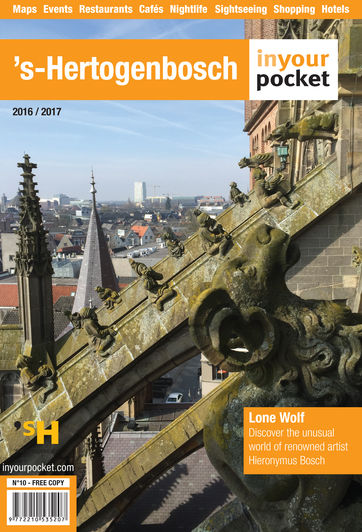Founded in 1185, ’s-Hertogenbosch is a royal town steeped in history.
1185: Duke Hendrik I van Brabant grants a charter to the settlement that was created on the high sandy areas where the rivers Aa and Dommel meet. The city was founded to protect the Dukedom of Brabant against invasions from neighbouring Holland and Gelderland. It will grow to become the fourth city within the Dukedom of Brabant.
1220: Outside the city walls of ’s-Hertogenbosch, a Romanesque church is built, dedicated to the evangelist St. John.
In 1380 work is begun on St. John's transforming it from a Romanesque church to a Gothic edifice. It's finally completed in 1530. When the pope declares ’s-Hertogenbosch an official diocese, St. John's officially becomes a cathedral.
In 1380 work is begun on St. John's transforming it from a Romanesque church to a Gothic edifice. It's finally completed in 1530. When the pope declares ’s-Hertogenbosch an official diocese, St. John's officially becomes a cathedral.
1318: The Illustrious Brotherhood of Our Blessed Lady is founded. It's also known as Zwanenbroederschap (Swan’s Fraternity) due to the extravagant birds it served at its banquets. The society that was initially founded in honour of the Virgin Mary had its own chapel in St. John’s Cathedral. Over the centuries, the brotherhood had a large number of influential members, including William of Orange, the painter Jeroen Bosch and Queen Beatrice.
1442: On 26 November a guesthouse for the mentally ill is founded with money from the estate of Reinier van Arkel. Located on the Hinthamerstraat, it still serves its original function and is now the oldest psychiatric hospital in the Netherlands.
1450: Hieronymus van Aken is born into a family of painters and later calls himself Hieronymus Bosch. He lives by the market where he produces such world-famous works as The Garden of Earthly Delight and The Last Judgement. He dies in 1516.
1481: Maximillian of Habsburg calls together the fourteenth chapter, or meeting, of the Order of the Golden Fleece in ‘s-Hertogenbosch. This extremely exclusive order was founded in 1430 in honour of the knighthood and for the protection of the faith. During this meeting, Maximillian’s son, Philip the Handsome, is knighted.
1566: On 22 August and 10 October there are iconoclastic riots in ’s-Hertogenbosch, which are part of a massive unrest known as the Beeldenstorm. Monasteries and chapels are attacked and the interior of St. John’s Cathedral is badly damaged. The Catholic government in Brussels finally restores order in their Counter Reformation and many reformers and protestants leave the city.
1579: On 1 July, fighting breaks out between supporters and opponents of the Union of Utrecht in ’s-Hertogenbosch, which initially supported independence from Spain. 40 people are killed and 120 injured. A day later upon hearing that the Spanish General Parma has conquered Maastricht and is heading to ’s-Hertogenbosch, Calvinists flee the city.
1629: The city and its fortress, which for many years had been considered unassailable, surrenders to the army of Frederick Henry, Prince of Orange. The Catholic faith is banned and male Catholic clergymen are forced to leave the city. Many artworks, including paintings by Bosch, disappear from the city.
1794: After three weeks of siege, the military governor of the city surrenders to French troops led by Pichegru. The living conditions of Catholics is much improved as a result and they're once again allowed to be a part of the city council.
1874: The city's official status as a fortified city is revoked as modern munitions have made the fortifications obsolete. However, unlike most other fortified cities in the Netherlands, ’s-Hertogenbosch's city walls are not torn down due to their secondary function as dams. They become a symbol of the city.
1881: On 17 December, the painter Jan Sluijters is born. Together with Piet Mondriaan and Kees van Dongen, he becomes one of the Netherlands' most innovative painters. During the world exhibition in Paris in 1937 he wins the prestigious Grand Prix.
1944: ’s-Hertogenbosch is liberated on 27 October by soldiers of the 53rd Welsh Division. In fierce fighting, 144 British soldiers are killed, 75 are reported missing and 270 are injured.
2005: ’s-Hertogenbosch is declared Fortified City of Europe 2005, thanks to the great efforts the city undertook to restore its fortifications.
2010: ’s-Hertogenbosch is declared the City of the Palate and organises several events relating to food and drink.
2010: ’s-Hertogenbosch is declared the City of the Palate and organises several events relating to food and drink.




